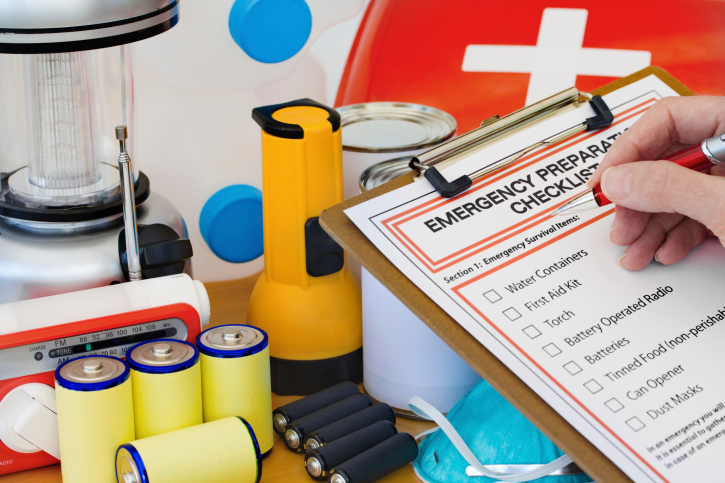Home Emergency Supply Kit

Severe weather, such as winter storms, can create situations where families are stranded at home for a period of time. Plan ahead and be prepared for these occasions to help make the situation less stressful. It is important to create a home emergency supply kit, and remember that it is important that all family members know where the kit is stored. Keep the kit in an easily accessible area for all family members. Make reminders to check the kit every six months so outdated items (food, first aid kit, and batteries) can be replaced.
The National Safety Council’s suggestions for home emergency supply kits include, but are not limited to:
- Water. Provide one gallon per person per day to last at least three days.
- Nonperishable food. Provide a three-day supply for each family member. And, don’t forget a can opener. Food suggestions include tuna, peanut butter, granola bars, and infant formula. And, if you have pets, don't forget pet food.
- Battery-powered radio and extra batteries. Then stay-tuned to weather and emergency updates on your local stations.
- Flashlights and extra batteries.
- First aid kit. Include the basics such as gauze and band-aids.
- Hand sanitizer, moist towelettes, and trash bags.
- Duct tape, hand-powered tools, and plastic sheeting. These will be useful if you need to protect your family from broken window openings or a leaking roof.
- Whistle. Keep a whistle handy in case you need to signal to rescuers.
- Prescription medications.
- Cash. In the event you cannot get to a bank or credit cards cannot be used, cash will prove invaluable.
- Sleeping bags and warm blankets.
- Wooden stick matches stored in a waterproof container.
- Disposable utensils and dinnerware.
- Paper, pencils, and markers. You might need to make signs or use these to occupy youngsters.
- Books, games, and puzzles. These activities help pass the time and keep children entertained until it is safe to leave the house.